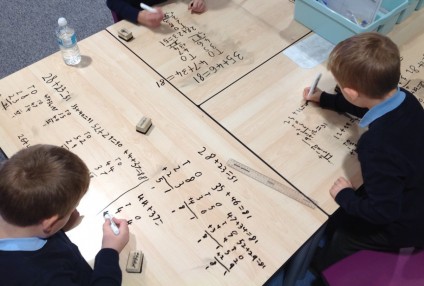Maths
At Costessey Primary School, we aim to ensure that every child leaves our school with a deep understanding and knowledge of Maths concepts, an enjoyment of Maths, a developing resilience to problem solve and curiosity to find out more.
Curriculum
The National Curriculum for Mathematics is at the heart of our learning intentions but we choose to follow a mastery based curriculum to help pupils develop a deep and secure knowledge and understanding of mathematics at each stage of their learning before moving on to the next step of their learning. It facilitates all children being able to know more and remember more by giving them time to learn and explore.
This approach depends on Maths being designed in context alongside problem solving activities and investigations where possible. Opportunities to develop fluency by regular practice and overlearning throughout the Maths session and Maths meeting, alongside opportunities to articulate reasoning to further develop understanding are key to ensuring children know more and remember more.
At Costessey Primary School, we broadly base planning on the White Rose scheme of work. We use assessments and analysis to focus on areas that need to be revisited so White Rose overviews are reviewed and amended where necessary to fit the needs of our children. We believe that children should be exposed to a variety of representations, question types and problems therefore we use a range of resources including White Rose, NRICH, NCETM and Deepening Understanding. Its success is based on careful planning from these resources to ensure that it is personalised for the needs of our children.
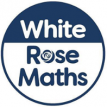 |
For more detail about the curriculum, head to the White Rose Maths website. Here you will find the overviews for each year group and the step-by-step planning we use as a basis for our own planning. |
The links below take you to the School's Calculation Policy. These documents outline the methods we use to teach addition, subtraction, multiplication and division
Addition-and-subtraction-calculation-policy-1.pdf
Multiplication-and-Division-calculation-policy-1.pd
Lessons
The teaching of Maths will be active and challenging with children feeling positive and being successful. Our calculation policy, developed to ensure depth and mastery at each stage, will be implemented alongside CPA modelling to foster progressive and versatile understanding. The use of prior learning and high quality assessment for learning opportunities is crucial. High quality teaching strategies will build on the White Rose Curriculum as a model of progression.
The three aims of the National Curriculum (fluency, reasoning and problem solving) underpin the teaching and learning of Maths. At Costessey Primary School, these skills are to be embedded in Maths lessons and developed over time. We value oracy within our setting and the importance this has when reasoning and problem solving and the sharing of thoughts and ideas. We endeavour to raise the importance of Maths in the wider world, thus making links wherever possible and conducting meaningful investigations.
Alongside daily Maths lessons, children will have Maths meetings, whereby each child is given the opportunity to regularly practise a number of skills. Arithmetic, including specific times tables tests, are used in each session as well as a main focus for the session. The focus is either a revisit of key objectives from previously taught units or is tailored for each class by the teacher based on their assessment of children’s learning following summative assessments.
CPA Approach (Concrete, Pictorial, Abstract)
Conceptual understanding is key to children being successful with Maths. The importance of concrete representations, noticing patterns and making links between ideas allows them to develop deep and secure knowledge. Once this has taken place children are able to work fluently at the abstract stage without the need for meaningless tricks or rules.
The CPA model is key to good Maths teaching in our school. We believe that all children, who are introduced to a concept, should have the opportunity to build on their abilities by following a concrete-pictorial-abstract approach.
Concrete – This ‘doing’ stage brings concepts to life. Children handle and use manipulatives to support their understanding and solve problems. Every abstract concept begins with interactive concrete resources until children are ready to move to the pictorial stage.
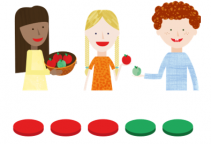
Pictorial – This ‘seeing’ stage makes grasping difficult concepts easier. Pictorial representations require a mental connection to the concrete stage as children model the problem in the form of a drawing. These representations can be very useful to visualise problems in order to reason and solve them.
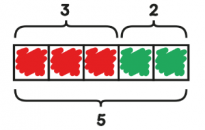
Abstract – This is the stage where Maths is simply represented by numbers and symbols (eg. +, -, %). Children should only move to this stage when they have a secure understanding of the concrete and pictorial stage. Progressing too quickly can leave gaps in understanding and mean connections with new learning are more difficult.

Assessment
As well as the statutory assessment points at the end of Reception, Year 2 and Year 6, children undertake termly assessments. We currently use the White Rose assessments as these directly link with the scheme that we follow. Teacher judgements are then constructed from observations and work in class, short end of unit assessments and these more formal tests at the end of each term.
Times Tables
In the summer term of Year 4 children complete the Multiplication Tables Check. It is at this point children are expected to know all multiplication facts up to 12 x 12. Learning of multiplication facts including links to multiples, factors, repeated addition, doubles, patterns and much more is taught within school. As a school, we subscribe to Times Tables Rock Stars as a platform to learn times tables. This program analyses performance to set focus tables. There is the ability to practise focus tables as well as compete against others and check performance against all tables. A few minutes practising times tables each day has shown to hugely benefit children with their recall of multiplication facts.
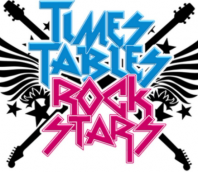
Here are some useful websites to practise key skills:
https://www.topmarks.co.uk/maths-games/hit-the-button - Excellent for retrieval of number facts such as doubles, halves and number bonds. There are many other fantastic games to aid learning just a quick search away.
https://nrich.maths.org/ - A website full of problem solving and games that require deeper mathematical thinking and reasoning. A trial before giving to children is recommended.
https://mathsframe.co.uk/ - Fun and engaging games with different focuses such as Ten Pin Bowling Multiplication as well as tasks like sorting 3d shapes. Generally aimed at KS2 but some games are easily accessible for KS1.
https://mathsbot.com/manipulativeMenu - A wonderful website full of digital resources that replicate the physical ones used in school. Under the manipulatives section, play with and use tens frames, place value counters, coins and much more.
https://home.oxfordowl.co.uk/kids-activities/fun-maths-games-and-activities/ - A platform that offers some games and lots of free worksheets that can be printed at home.
https://www.splashlearn.com/math-games - US website that covers primary and secondary school. Games are easy to understand and access independently even for younger children.
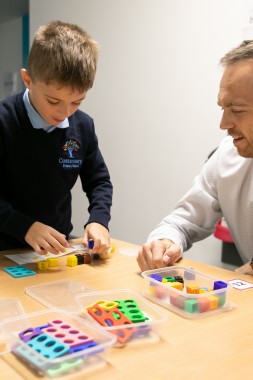 |
|
|
|
